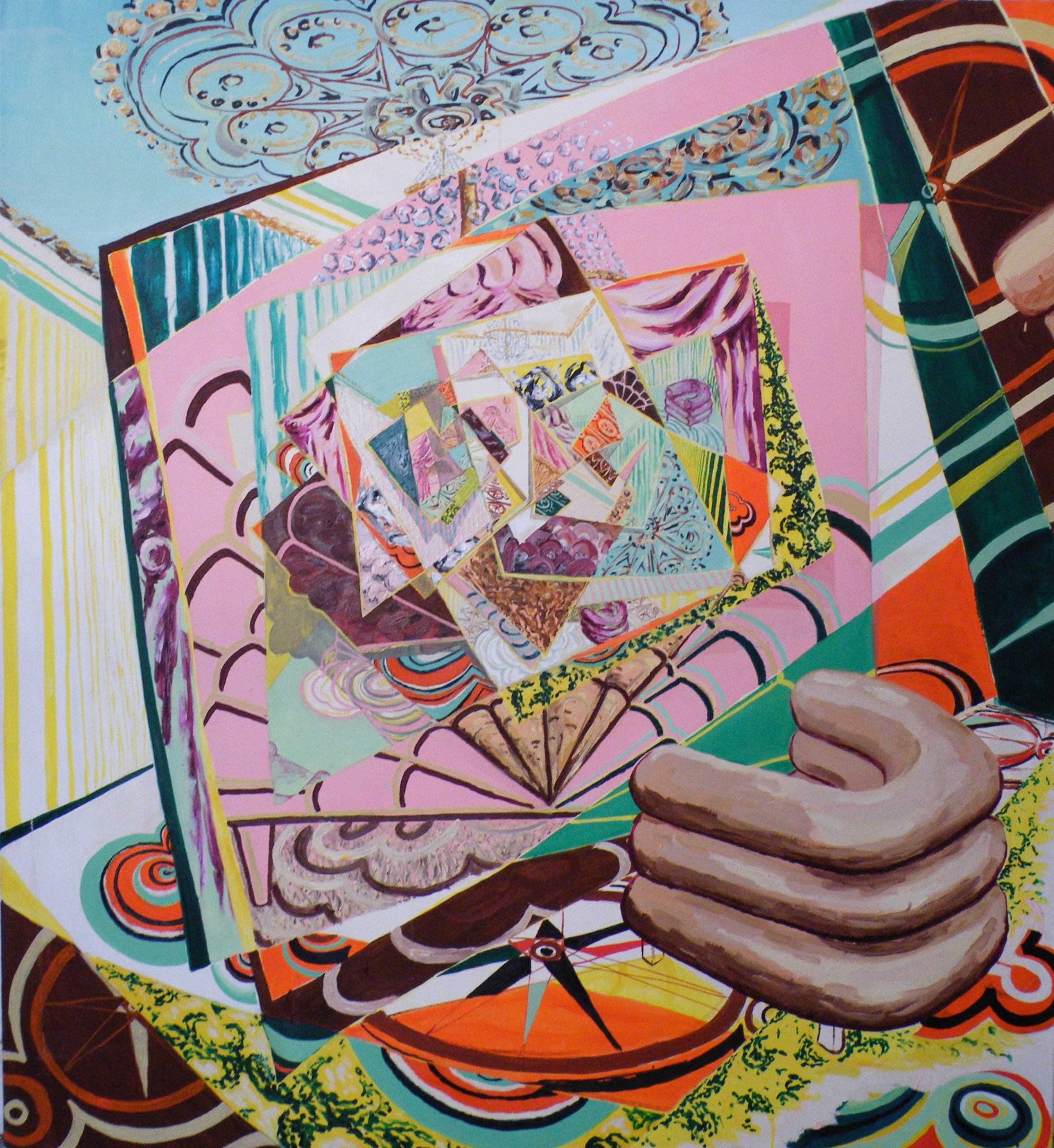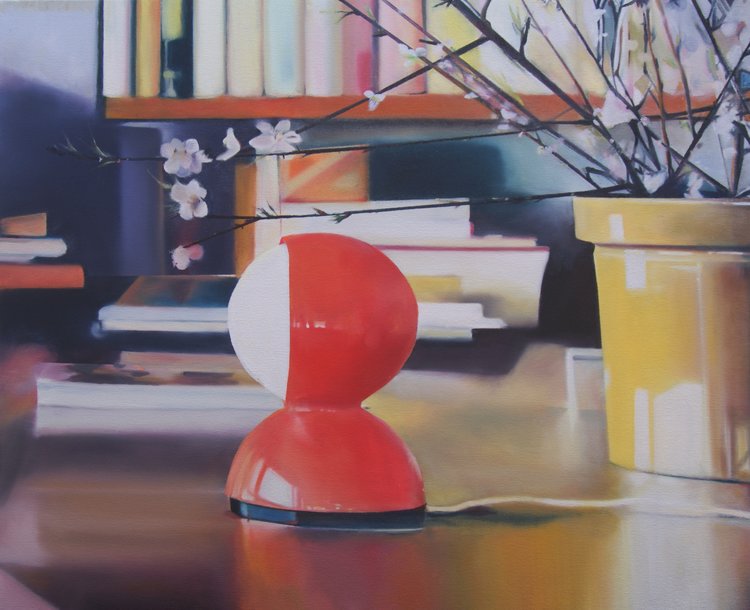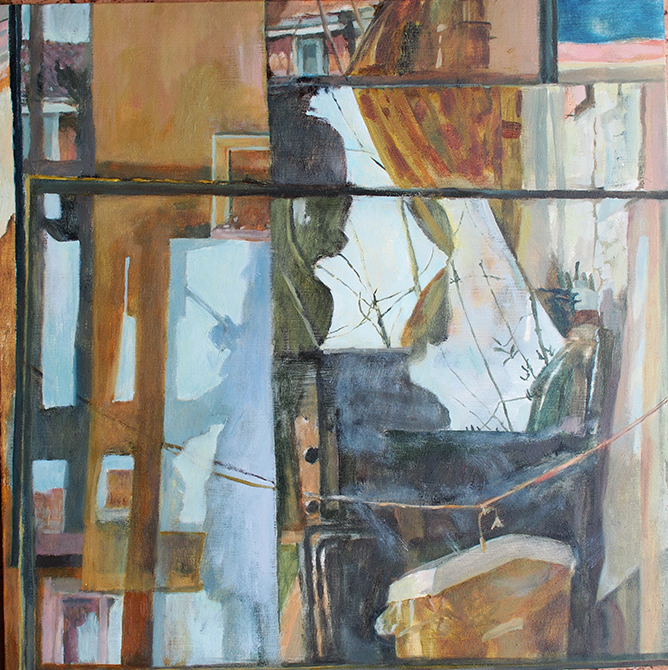Judith Weik, Coordinator of Art at the Alison Richard Building, speaks to Clio Lloyd-Jacob, curator and participant of Permeable Spaces. The exhibition is located on all four floors of the Alison Richard Building at the University of Cambridge and runs until 13 September 2019.

Stephanie Kingston, Versailles Vortex
Q: What is the exhibition “Permeable Spaces” about?
I selected these works, hoping to give visitors different qualities of spaces to inhabit with their imaginations. Our environment is increasingly crowded with people, buildings, signals and noise. These works offer ways to expand the space we are in physically by imaginative reverie and becoming aware of how our perceptions of space impact on the way we feel able to occupy and use it.
Q: How is this visible in the work?
Stephanie Kingston’s work, Versailles Vortex, comes form a visit to Versailles with a friend who was taken ill in the heat and crowds. She has combined varied aspects of the ornate trappings of power which are inherent to that building and arranged them in a structure which is simultaneously fragmented and repetitious. The viewer can use the representational clues to find a foothold, even while experiencing the pictorial instability. We can inhabit both the grandeur of the space and the fragile falling state of the body, offering us an image of our own precarious balance and temporality.
By contrast, Alexandra Baraitser offers a quasi-photographic treatment of space, where we are less immediately aware of the mediating presence of the artist, and are placed rather in a voyeuristic position of looking into somewhat mysterious spaces. Within her images, objects, people and fragments of architectural structures are juxtaposed with a detachment and neutrality, combined with a feeling of suspended narrative, like a cinematic still. Scale, depth, and surface can vary suddenly, leaving a vague sense of disquiet or tacit threat.

Alexandra Baraitser, Desktop 1
Andrew James tackles our relationship with our environment through the seemingly endless repetition of a man climbing and descending a staircase. Alluding to the movement of sand through an hour glass, and to Duchamp’s use of this subject, James’s monitor piece, Helix, explores themes of creativity through time, our endless returns to the same point in order to set off again along our own tracks, rising and falling like hope and disappointment. A subtle soundtrack sets up the feeling of the footfall, and links the work to the larger staircase that rises through the ARB’s atrium.
Amanda Lwin’s two glass houses, Lordship VI and Lordship V, were inspired by a particular house on an island behind the Lordship Lane estate in North London which, occupied by poets and musicians, and withstood the reconstruction of the surrounding area. A sort of icon of a creative space, holding and reflecting light into the space around it.
Melissa Pierce Murray’s balanced structures out of violently cut steel are poised against softer, more fragile or iridescent elements. One part draws us in as the other repels us, reminding us of the complex action of attraction and repulsion in all physical matter.
Louise Butler Adams takes us into vast inner reveries using a slightly out of focus approach to still lives. Reflective objects take colour from their surroundings and invite the viewer into an inner landscape, to meditate upon in chromatic precision. Sparse clear brushwork contrasts hard metallic surfaces with united soft areas of a main hue, creating dramatic geography.
Tooney Phillips has a background in architecture, and her painting, etchings and drawings are more directly involved in the excavation of surfaces, and how blocks and cavities relate in space. Her experience of surface and how it is affected by the play of light and weather is communicated through subtle layering of washes, sometimes overprints, creating two-dimensional models of space, somewhat redolent of stage sets.
My own paintings play with the difference between gaps and objects, often reflected in glass or mirror. Edges give way to unexpected depths and small luminous areas are threatened by darker reflections, sometimes of my own presence.

Clio Lloyd-Jacob, Studio Games II
Q: How will Coop’s performance ‘Upset’ relate to the theme?
Coop (Andrew James and Clio Lloyd-Jacob)’s piece “UpSet”, raises questions about space and time in close communication. Using live and recorded dialogue with projected and actual shadow play, their layers confound the present moment with the history of the current thought. A dialogue about collaboration, its misunderstandings and more tender moments, is built between the two artists, the images they project, the sounds layered in and the audience. Coop will perfom ‘UpSet’ at the exhibition’s closing event on the 12 September 2019.

Clio Lloyd-Jacob, image from rehearsal for ‘UpSet’

